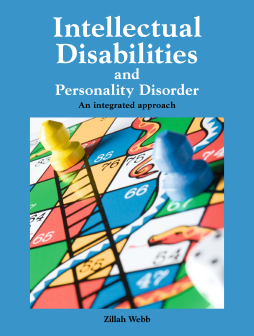
Additional Information
Book Details
Abstract
This handbook introduces personality disorders, their epidemiology and how to recognise them. It examines how a personality disorder is shaped by an individual’s intellectual disability and the difficulties this may lead to. It also explores a range of practical approaches to any difficulties that may arise to help staff work more effectively with this client group.
Table of Contents
| Section Title | Page | Action | Price |
|---|---|---|---|
| IntellectualDisabilities | i | ||
| Imprint page | ii | ||
| Contents | iii | ||
| About the author | 1 | ||
| Acknowledgements | 2 | ||
| Preface | 3 | ||
| Chapter 1: Personality disorder and individuals with intellectual disabilities | 5 | ||
| Chapter 2: Unhealthy self-image and low self‑esteem | 39 | ||
| Chapter 3: Emotional distress | 61 | ||
| Chapter 4: Difficulties in interpersonal relationships | 93 | ||
| Chapter 5: Difficulties in relationships with staff | 123 | ||
| Chapter 6: Difficulties with self-control and impulsivity | 153 | ||
| Chapter 7: Unhelpful core beliefs and distorted thinking | 187 | ||
| Chapter 8: Physical health problems | 219 | ||
| Chapter 9: Mental health problems | 239 | ||
| Chapter 10: Challenging behaviours | 271 | ||
| Chapter 11: Suicidal behaviour, self-harm and self-injury | 321 | ||
| Chapter 12: Crisis management | 359 | ||
| Chapter 13: Difficulties engaging with services | 399 | ||
| Chapter 14: Tensions, disagreements and unhelpful responses within and between teams | 415 | ||
| Chapter 15: Difficulties with relatives, family and partners | 447 | ||
| Glossary | 471 |
